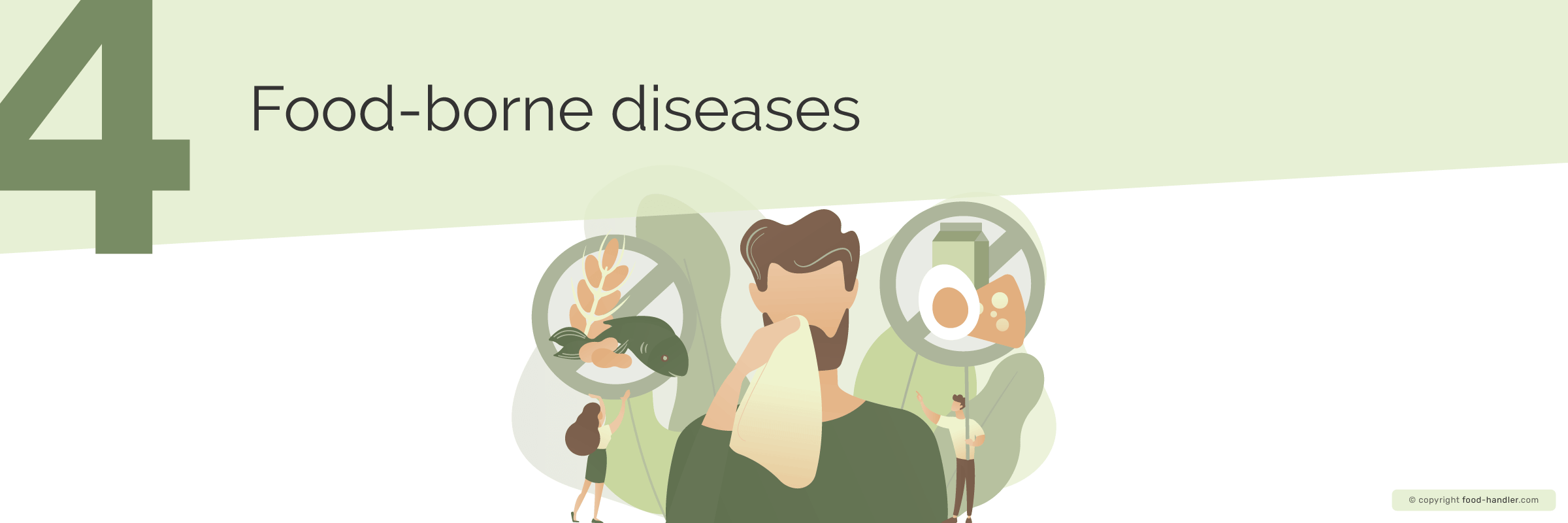FOOD HYGIENE AND SAFETY - LEVEL 2 COMPLIANT - CERTIFICATION


Updated on 2024
Lesson 4: summary

Microorganisms act as a source of infection or food hazard. But what are microorganisms? They are also called germs or microbes and are living beings so small that they are invisible to the human eye.
Let’s list them according to the harm they can cause:
What do they need to live?
The most frequent symptoms are general discomfort, vomiting, diarrhea and abdominal pain. But the most dangerous ones can cause serious injuries and even death.
What food is more dangerous or likely to become contaminated?
Those that pose a MAJOR RISK are:
Lesson 4: extended
Not all microorganisms are bad. Some of them are even used to make food (yoghurt, cheese, bread...).
These are responsible for the decay of the food. They "warn" us of their presence, since when they are in a food they cause it to change its normal smell, colour, flavour and texture. Therefore, normally, we will not use these foods when they have a "rare" appearance. If something smells bad or has a strange color, we will not eat it because it will be bad food.
These are the most dangerous, because at first glance they do not produce changes in the food. They are the usual producers of food-borne diseases.
Food-borne illness is caused by eating contaminated food or drink. Most of these diseases are caused by bacteria, viruses and parasites. Most common foodborne diseases are viral and bacterial.
The most common diseases caused by bacteria are salmonella, campylobacteriosis, escherichia coli, listeria and vibrio cholerae. The manifestations of foodborne microbial diseases are usually gastrointestinal in nature, so the general symptoms of most microbial diseases are: abdominal cramps or pain, diarrhea (sometimes with bleeding), vomiting, and fever.
The presence of bacteria in food is not always visible, i.e. not whenever a food is contaminated by the presence of food bacteria, it will have changes in taste or smell or the appearance of the food will be altered. This is why it is so important to maintain proper prevention and hygiene in food handling.
Parasites are organisms that feed on the protective nutrients of other organisms known as hosts. These guests may be animals or human beings. Parasites can be present in both food and water and can cause disease. They are also transmitted from one host to another by the consumption of contaminated water or food or by contact with the mouth of any contaminated agent that has come into contact with the faeces of infected animals or persons.
The most common diseases transmitted by parasites are: trematodiasis, echinococcosis, toxoplasmosis, trichinosis, taeniasis, cysticercosis, giardiasis, crypto or cyclosporiasis.
The most common microbial disease caused by viruses is norovirus, the most common cause of acute gastroenteritis. It is a highly contagious virus that causes inflammation of the stomach and intestines, resulting in stomach pain, vomiting, nausea and diarrhea. Unlike bacteria, viruses are strict intracellular parasites and cannot replicate outside the host organism, their spread depends closely on it.
For this reason, viruses cannot be replicated in water or food, so during processing, transport or storage, viral food contamination will not increase and may actually decrease. Most viruses in food or water are resistant to disinfection and heat.
They need basically the same things we do to live: water, food and something to take shelter in, to be "at ease" wherever they are. Specifically, they need:
Bacteria, parasites and viruses appear, inhabit and reproduce in food when food safety conditions have not been adequate. Knowing the factors that favour the appearance of contaminants in food is key to preventing and detecting them, thus minimising the risks of contamination and contracting food-borne diseases.
Any food can be susceptible to contamination, but it is true that there are some foods of higher risk, which by their nature, composition or form of culinary preparation make them perfect for bacteria to multiply in. Among these foods we find:
We use 256 bit SSL encryption technology to guarantee the security of our website. You are safe with us.